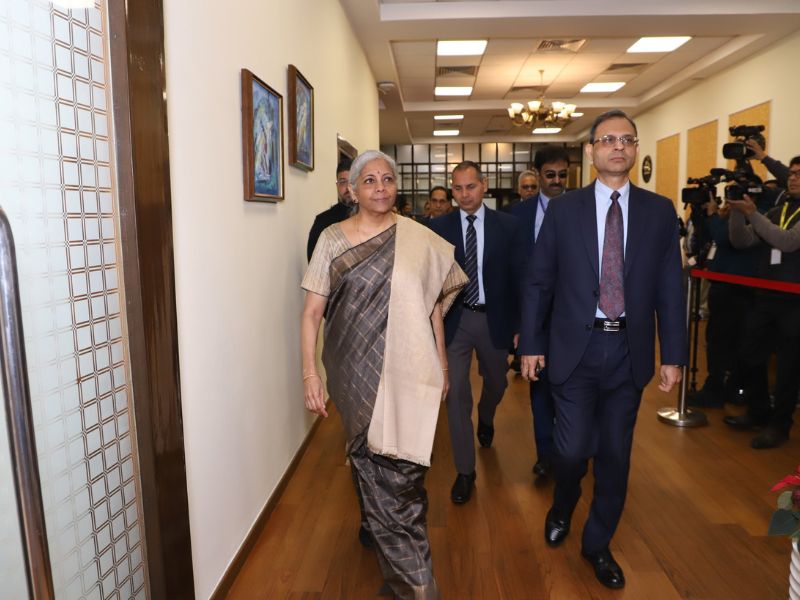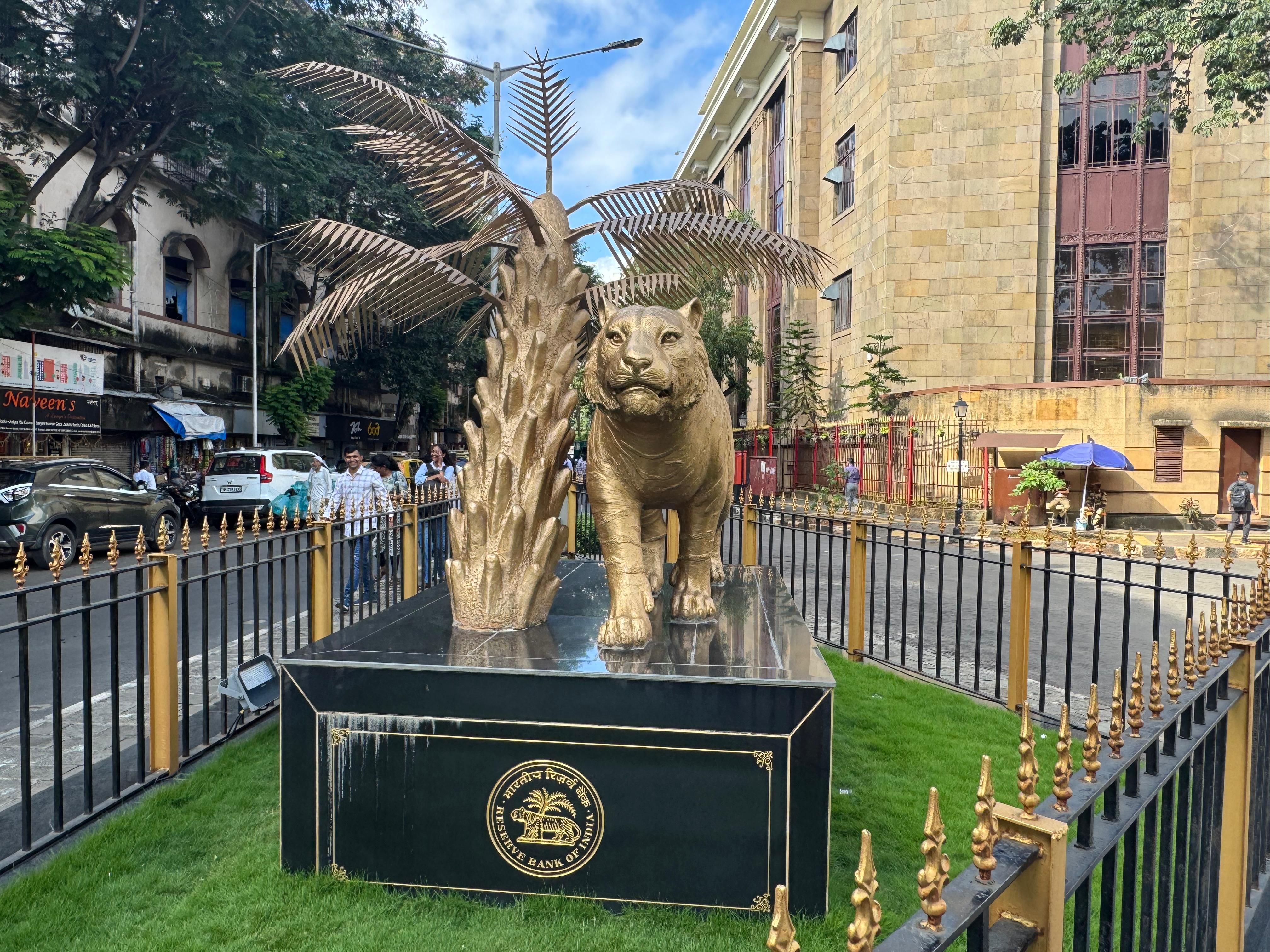.png)

Dhananjay Sinha, CEO and Co-Head of Institutional Equities at Systematix Group, has over 25 years of experience in macroeconomics, strategy, and equity research. A prolific writer, Dhananjay is known for his data-driven views on markets, sectors, and cycles.
February 13, 2025 at 3:00 AM IST
The Indian markets have recently experienced two important events: the Union Budget and the Reserve Bank of India's policy announcements. However, they have passed without creating much invigoration.
The correction in equities has resumed, the rupee has breached the 88-per-dollar mark, and India’s 10-year government bond yield has hardened to 6.71% from 6.65% before the policy. Over the past 6 months, with a 16% correction, the value erosion in Indian equities has been ₹74 trillion or 22% of the GDP.
Clearly, the market is unconvinced that the central bank and the government have successfully infused a meaningful growth narrative.
One of the key reasons for this skepticism is the unconvincing projections on economic growth. The Union Budget has pegged nominal gross domestic product growth or 2025-2026 at 10.1%, while the RBI has projected inflation at 4.2%, implying a real GDP growth of 5.9%. However, this contradicts the Economic Survey’s projection of 6.3-6.8% real GDP growth and the RBI’s own estimate of 6.7%.
Adding to the uncertainty is the likelihood that inflation will remain higher than the RBI’s projection due to the impact of rate easing, possible regulatory relaxation on lending, the depreciation of the rupee against the dollar, and the rise in core inflation.
The official narrative of economic resilience does not align with the on-ground realities faced by businesses and households. Household incomes have remained under strain due to the sustained contraction in real wages, a trend acknowledged in the latest Economic Survey. This wage pressure is also reflected in corporate earnings, with spending on salaries and compensation decelerating to just 2-3% year-on-year in the October-December quarter of 2024-2025.
At the same time, weak consumption demand and reduced government capital expenditure have resulted in subdued corporate earnings, affecting a significant portion of GDP. With more than 85% of the economy feeling the strain, the growth projections put forth by policymakers appear detached from reality.
The RBI’s approach to interest rate cuts has further added to the market’s unease. The central bank has projected inflation at 4.2% for 2025-2026, but this assumption seems fragile given that December 2024’s inflation stood at 5.2%, with the year-to-date average at 4.9%, still above the target of 4%. Inflation remaining above the RBI’s target in 59 of the 61 months since January 2020 makes it premature to assume that the central bank has achieved its inflation objectives. Moreover, there has been a decline in real wages over the past 5 years.
Also, the RBI’s assumption that rising core inflation will be offset by falling food inflation is contingent on volatile factors such as weather conditions and global agricultural price trends. If India’s potential GDP growth is indeed lower than 7%, as many analysts believe, then an early rate cut could prove counterproductive.
Stimulating demand in an economy facing structural challenges could widen the external deficit and trigger a rebound in inflation. The issue is further complicated by the fact that the banking sector’s credit-deposit ratio is at a peak level of 80.8%, limiting the effective transmission of rate cuts. A reduction in rates could discourage deposits while incentivising retail lending, increasing the risk of non-performing assets, especially at a time when household leverage is already at elevated levels.
The incomplete depreciation of the rupee remains another area of concern. The India-US 10-year bond yield spread has narrowed to 219 basis points, and Indian corporates continue to underperform on growth expectations. Overvaluation in the domestic market and the lingering overvaluation of the currency make the rupee more vulnerable to sharper devaluation. This could accelerate the depreciation of the rupee towards the 90-92 a dollar range, further impacting capital inflows.
Market overvaluation persists as a key deterrent to investor confidence. The earnings performance of Nifty companies in the third quarter has fallen short of expectations. With only 4% earnings growth in 2024-2025 so far, the trailing price-to-earnings growth (PEG) ratio has risen sharply to 5.2 times, up from 2.4 times four months ago.
An analysis of 413 companies from the Nifty 500 index shows a mere 6% profit growth, with non-financial firms registering just 3.6% and financial companies managing 10.9%. Non-financial companies’ sales growth has slowed to 2.8%. Additionally, nearly 70% of companies have seen earnings downgrades for 2024-2025.
In contrast, the US S&P 500 has seen companies surpass earnings expectations by 7.5%, with 77% of those that have reported so far recording strong results. The earnings growth for S&P 500 companies stands at 16.4%, bringing its PEG ratio down to 1.6 times, significantly lower than Nifty 50’s 5.2 times.
Despite tax relief measures and RBI’s easing, growth remains underwhelming. The underlying assumption in both the Budget and monetary policy appears to be that the current economic slowdown is temporary and cyclical. Consequently, policymakers have relied on minor adjustments such as income tax relief amounting to just 0.35% of GDP and rate easing to counteract the slowdown. However, this approach fails to acknowledge the structural nature of the economic drags at play.
Markets remain unconvinced about the ability of current policies to address the growth slowdown, which could be exacerbated further by rising global protectionism. If the current trends persist, growth disappointments are likely to continue, the INR/USD exchange rate could witness sharper depreciation toward the 90-92 range, and local investor participation will become even more critical for sustaining Indian equities.
Given the steep market overvaluation, a prolonged negative sentiment in mid- and small-cap stocks could trigger retail investor redemptions, intensifying foreign portfolio investor (FPI) outflows, much like what happened in 2018.
For a long time, there has been a pressing need for a comprehensive macroeconomic policy overhaul. Calls for such reforms have been made repeatedly, including in December 2022 and December 2024, but the urgency has now become undeniable. As policymakers recognise this reality, the coming months may see more serious efforts to revive growth.




